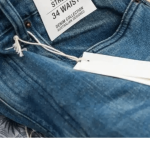Introduction
If you’re considering adding insulation to your home, you may be wondering if denim insulation is the right choice for you. Denim insulation has both pros and cons, so it’s important to weigh all of the information before making a decision. In this blog post, we will discuss the pros and cons of denim insulation so that you can make an informed decision about whether or not it’s the right choice for your home.
Table of Contents
- What is Denim Insulation?
- How Denim Insulation Is Made?
- Pros of Denim Insulation
- Extremely eco-friendly
- Good fire protection
- Easy installation
- Cost-effective
- Better For Respiration
- Recyclable
- Cons of Denim Insulation
- Not Suitable for Extreme Cold Climates
- Less Malleable
- Difficult to Remove
- More Expensive
- May Contain Harmful Organic Compounds
- Conclusion
What is Denim Insulation?
Denim insulation is one of the most popular green products on the market. Created from recycled denim fabric and cotton fibers, it’s an excellent alternative to traditional fiberglass insulation.
Denim insulation made from recycled jeans is a great choice for walls, ceilings, floors, attics, and crawl spaces. Not only does it provide superior fire protection due to its Class A rating (achieved by treating with borate-based flame retardant) but also inhibits the growth of fungi and bacteria as a bonus! Just like blown-in cellulose insulation this cost-effective option can help save energy at home while helping out the environment too.
Unlike fiberglass which can be abrasive and difficult to install, denim insulation is easy to handle, making it a good choice for homeowners who prefer DIY installation projects. Moreover, since it comes from recycled materials, you can buy it with peace of mind knowing that you’re contributing to environmental sustainability and conservation. All in all, denim insulation offers a great combination of eco-friendly performance and ease of use—making this a smart choice if you’re looking for an efficient way to insulate your home.
How Denim Insulation Is Made?
Step 1
Once your pre-loved denim has been exhausted of its use, it’s time for the second act! All it takes is a quick trip to the nearest recycling facility.
Step 2
At the recycling facility, workers meticulously strip away all extraneous details such as zippers and buttons from recycled denim.
Step 3
Subsequently, mechanical shredders expertly cut the denim into tiny pieces at the recycling plant.
Step 4
Denim is broken into small shreds and tightly packed into massive bales. These are then shipped to a separate processor, which takes it one step further by transforming the denim into its fibrous form.
Step 5
Denim Fibers are chemically treated with borate flame retardant and then compressed into large mats.
Step 6
To complete the process, the Large mats are cut into measurements that will snugly fit within any wall or floor cavities.
Pros of Denim Insulation
-
Extremely eco-friendly
Any kind of insulation made from recycled materials is great for the environment. Denim insulation provides a sustainable way to insulate your home, as it’s made from fabrics that would otherwise be discarded and end up in landfills.
-
Good fire protection
Denim insulation has a Class A flame rating, making it one of the best choices for fire-resistant insulation.
-
Easy installation
Because denim insulation is lightweight and easy to handle, you don’t need any special tools or skills to install it in your home. It can be used as a DIY project without much difficulty.
-
Cost-effective
Denim insulation is a great option if you’re looking for an inexpensive way to insulate your home. It’s cheaper than many other kinds of insulation and can be used in both new construction and existing homes.
-
Better For Respiration
Unlike fiberglass insulation, denim insulation won’t release irritating fibers into the atmosphere. Therefore, to work with it all you need is a basic dust mask – unlike fiberglass where using a tight-fitting half-face respirator or at least an N95 mask would be recommended.
-
Recyclable
Not only is denim insulation made from recycled materials, but it can be reused again post-use, unlike fiberglass which must always just go to the landfill. Even in excellent condition, used fiberglass cannot be reutilized – it has to stay there! Denim insulation is truly one of a kind due its ability to both utilize existing resources and also circumnavigate ending up in landfills itself.
Cons of Denim Insulation
-
Not Suitable for Extreme Cold Climates
Denim insulation is not as effective in very cold climates. It may not provide sufficient thermal resistance and can cause condensation when temperatures drop too low. Therefore, it’s best to choose a more suitable insulation material if you live in an extremely cold area.
-
Less Malleable
Fiberglass insulation is the ideal solution for your project because of its incredible malleability. You can stretch it an extra inch or two without any hassle and easily shove a chunk into even tight crevices, making this material incredibly efficient to use!
Denim insulation, however, is often a very tight mat that fails to stretch like fiberglass. It can be pulled off in chunks but not as readily compared to its glassy counterpart. The good news is that some denim insulation now comes in rolls which makes installing it much simpler akin to the ease of setting up fiberglass insulation.
-
Difficult to Remove
It can be difficult to remove denim insulation if you ever decide to replace it. It’s tightly packed and firmly adhered to the surfaces, so removing it requires a lot of time and effort.
-
More Expensive
Denim insulation is slightly more expensive than other types of insulation, such as fiberglass and cellulose. So if you’re looking for an inexpensive option, denim may not be the best choice.
-
May Contain Harmful Organic Compounds
Some types of denim insulation may contain VOCs or other organic compounds that can be harmful to your health. Be sure to check with your supplier that the product has been tested for safety before installing it in your home.
Conclusion
There are many factors to consider when deciding whether or not to use denim insulation in your home. The pros and cons we’ve listed here should help you make an informed decision that’s right for you and your family. If you have any questions or would like more information, please don’t hesitate to reach out or leave a comment below. We’re always happy to help!






